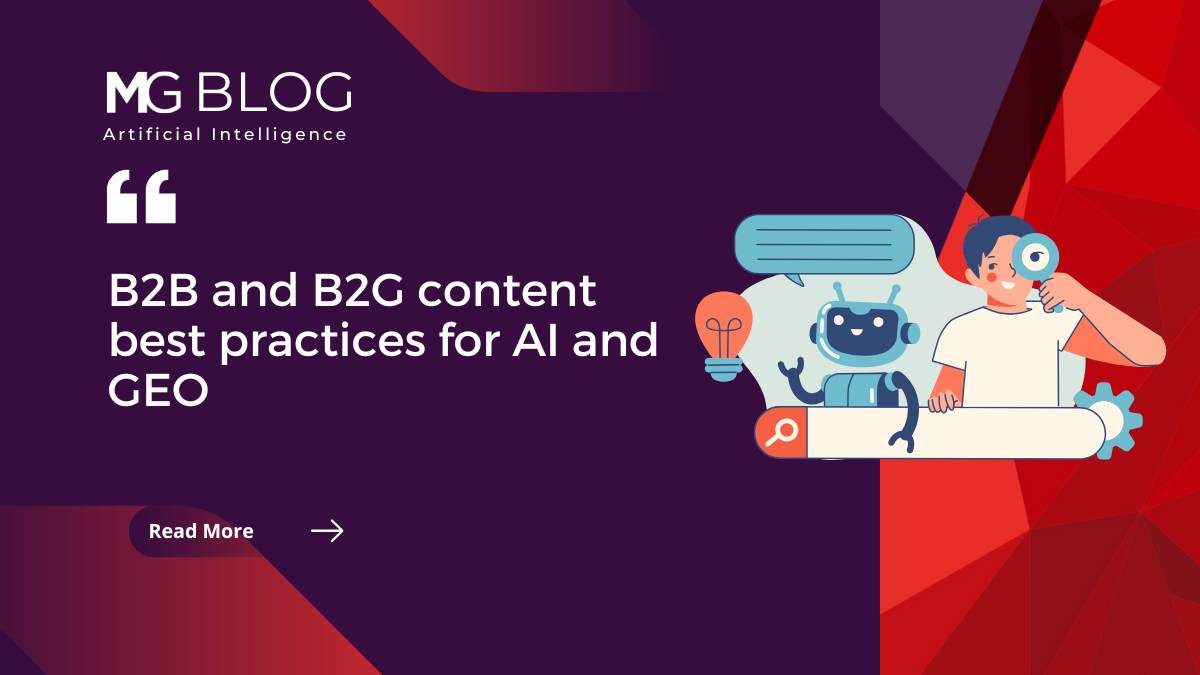
Search behavior is rapidly changing. Once, buyers began their journey with a Google search, clicking through pages to find answers. Today, that journey often starts and ends with a generative AI tool like ChatGPT, Google Gemini, Microsoft Copilot, or Perplexity. These platforms don’t just point to websites; they synthesize information and deliver direct, conversational responses — frequently without linking out.
This shift has significant implications for content strategy. To thrive in an AI-powered, zero-click landscape, brands need to embrace Generative Engine Optimization (GEO) and Answer Engine Optimization (AEO). These frameworks are designed to ensure your content is not just discoverable, but referenced, summarized, and trusted by AI systems. Think of it more as an evolution of SEO, not a replacement strategy. Remember that traffic is being split across channels, so it’s important to still get the basics right across your digital strategy.
What is GEO and why does it matter?
Generative Engine Optimization is the practice of creating structured, high-authority content designed to be easily understood, cited, and surfaced by AI models. In an era where users ask tools like ChatGPT, “What’s the best project management software for government agencies?” or “What are top-rated internal tools for remote teams?”, your brand needs to be part of the answer — not buried in a list of links that never get clicked.
AI Overviews and zero-click summaries are already here, and they’re rewriting the rules of content visibility. Although not a magic cure-all alone, implementing GEO best practices increases your chances of your brand earning its place in these AI-curated responses.
Writing for AI and humans: How to win the synthesis game
Generative AI models don’t scan the web like search engines of the past. They pull from high-authority platforms, schema-rich sites, and clearly structured pages to synthesize insights. Your goal isn’t just to rank, it’s to be quoted. To adapt for GEO, ensure your content is:
- Clear and structured: Use H2s, bullet points, TL;DRs, and FAQs
- Conversational and natural: Write in the voice your audience uses when asking AI questions
- Rich with insight: Provide in-depth, direct, and valuable takeaways in every section
- Technically optimized: Leverage schema markup and keep content updated
As someone who’s been writing longer than I care to share, I want to emphasize one thing: don’t forget the human side. Every piece of content should inform and connect. That’s why…
Storytelling still matters in the GEO era
While schema helps AI parse your information, storytelling is what makes your content credible, emotional, and memorable for humans and machines alike. AI platforms increasingly favor sources that feel real, insightful, and trustworthy.
Telling clear, structured stories like customer case studies, founder journeys, or product evolution narratives gives your content emotional weight and strategic staying power. This isn’t just about brand voice. It’s about resonance. When buyers see themselves reflected in your content, they’re more likely to engage, remember, and convert. And when your content resonates, AI takes note.
Human connection: Your competitive advantage in a machine-led world
As AI takes over the mechanics of discovery, people still crave connection. The more automated the journey becomes, the more valuable authenticity, empathy, and trust become. I recently shared why Hayao Miyazaki’s storytelling is timeless and why it’s a masterclass for corporate storytelling, and it comes down to building stories that should spur emotion, build on relatable human experiences, and use compelling visuals and narratives.
That’s why storytelling isn’t just compatible with GEO — it’s essential. Stories grounded in human experience bridge the gap between data and emotion, between logic and decision-making. AI may generate the answers, but your human story makes the recommendation memorable. Classic storytelling themes like David and Goliath, the hero’s journey, or comeback remain a part of our collective fabric for a reason.
When you infuse your content with real voices, clear value, and meaningful context, you create something that’s both source-worthy for AI and emotionally sticky for your audience. That’s how you turn zero-click summaries into lasting relationships.
What exactly does that look like? To practice what I preach, here’s a breakdown of some common dos and don’ts to consider in your content creation and marketing strategy.
GEO content creation: Dos and don’ts
| ✅ DO | ❌ DON’T |
| Use schema markup (Organization, Product, FAQ, etc.) | Rely solely on keyword stuffing |
| Include a TL;DR at the top of important pages | Bury your message deep in the page |
| Answer real user questions (e.g., “What’s the best CRM for startups?”) | Create vague, generic content |
| Optimize profiles on G2, Capterra, Crunchbase, Wikipedia, etc. | Ignore third-party directory presence |
| Prioritize natural, conversational language | Overuse jargon without context |
| Break down complex topics into sections with clear takeaways | Publish long, unscannable paragraphs |
| Encourage and display verified reviews and testimonials | Assume AI will trust your brand without proof |
| Keep pages visibly fresh with “last updated” timestamps | Let your best pages go stale |
| Create authoritative explainers and comparisons | Focus only on brand promotions |
Evolving from rankings to recommendations
Where the goal of traditional SEO was to get your content ranked, GEO helps your content get referenced.
Succeeding in an AI-powered landscape means becoming a trusted source quoted by AI tools, preferred in chat summaries, and trusted by B2B buyers. That requires smartly structured, emotionally engaging, and technically sound content.
So, if there’s nothing else you’ve taken away from this blog, make sure you still cover tried and true basics together with emerging GEO best practices, including:
- Structure your site for AI
- Infuse your content with real stories
- Speak your audience’s language
- Optimize across the platforms AI trusts
To learn how to position your B2B brand for success, check out our latest playbook, Navigating AI Search: Your Guide to Generative Engine Optimization (GEO).



